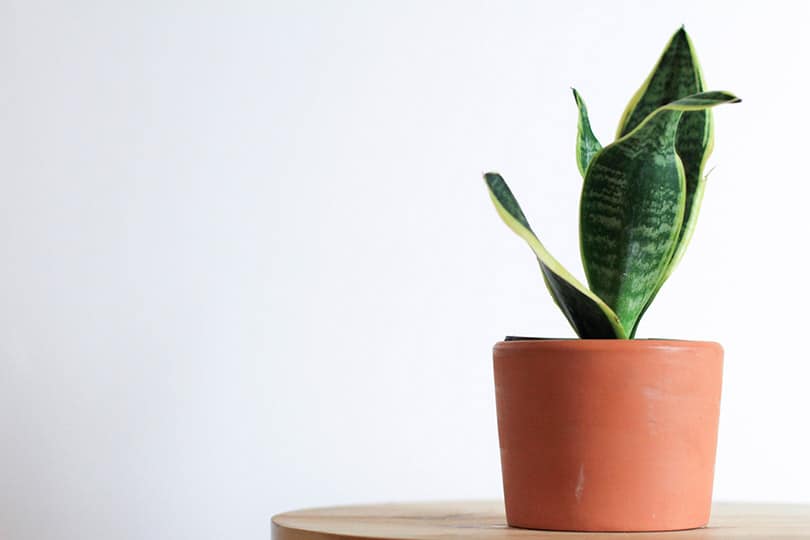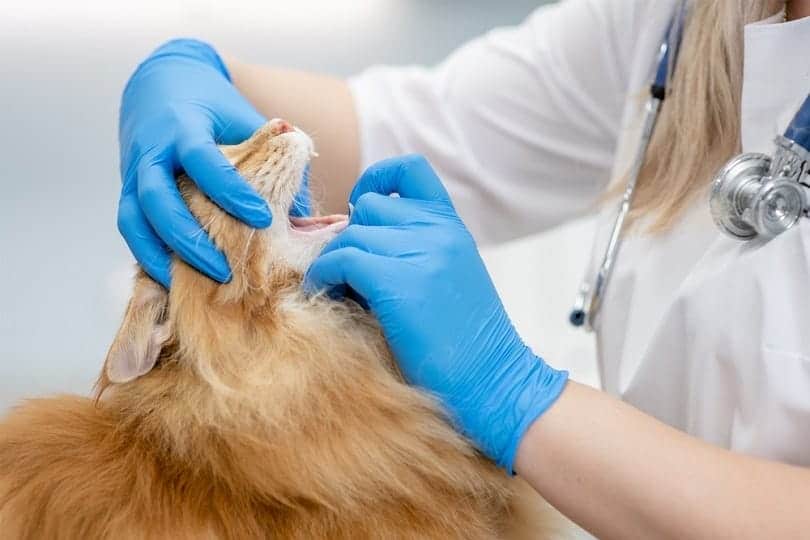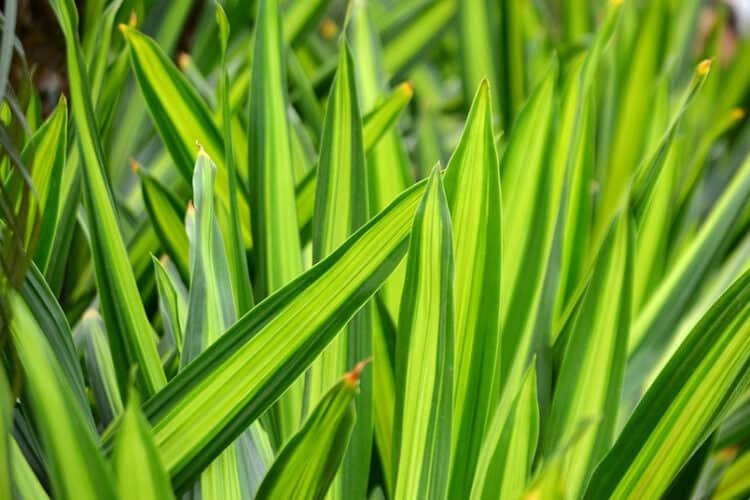The snake plant is a popular decorative houseplant with long, thin leaves that grow vertically. This plant is also called a mother-in-law’s tongue, a magic sword plant, or a viper’s bowstring hemp plant. They are common in plant-loving households because they are hardy and easy to care for. They don’t require much maintenance and can survive periods of neglect, like low-light and drought, with ease.
But no matter what name you use for these plants, they are not safe for cats. They are toxic to cats and dogs, according to the ASPCA. The good news is that the toxicity of this plant is relatively low. However, depending on the amount that your cat consumed and what symptoms they are experiencing, you’ll need to contact your vet for advice and possible treatment if your cat eats this plant. Some cases will require no treatment, while other cases could be deadly.
Why Are Snake Plants Toxic to Cats?

The snake plant contains mild toxins called saponins. These are irritating to human skin should you come in contact with the plant’s sap. Cats can get the sap on their fur and lick it off. They can also bite or chew the leaves and ingest the saponins that way. They may get discouraged from eating too much of the plant because it has a bitter taste.
The saponins provide a natural insecticide and fungicide for the plant, but they can be harmful to cats. Any contact with the saponins can irritate their skin. In severe cases, cats may experience an allergic reaction when eating this plant that can cause the throat and esophagus to swell.
Symptoms of illness to watch for after you’ve discovered that your cat has ingested part of a snake plant are:
- Nausea
- Vomiting
- Diarrhea
- Swelling of the face, lips, and tongue
- Loss of appetite
- Drooling
- Depression
If you notice any of these signs, bring your cat to the vet immediately. If you don’t notice these signs, you should still call your vet to let them know what happened and ask if there’s anything that you need to do for your cat at home. Treatment varies depending on symptoms.
Treatment and Recovery of Snake Plant Poisoning

If your cat needs medical treatment after they eat a snake plant, your vet will start by assessing their condition. They may flush the cat’s mouth to remove any remaining bits of the plant that could still be leaking toxins. If your cat’s condition is severe, they may need to have vomiting induced or have their stomach pumped to stop any further digestion of the saponins.
Your vet may give your cat fluids to combat dehydration and certain medications to soothe the stomach and help them breathe easier. Treatment will vary from cat to cat, but cats are usually expected to recover fully within a couple of days.
The longer the cat goes without treatment, though, the worse the condition could become. While snake plant poisoning is usually not fatal, the symptoms that it causes could be. If your cat is dehydrated and unable to eat, the situation could turn deadly within days. It’s important to seek treatment for your cat as soon as you see that they’ve eaten the plant.
Final Thoughts
Snake plants are toxic to cats, but luckily, the toxicity is low. If your cat eats this plant, they can experience snake plant poisoning from the saponins in it. Watch your cat to see if they start to show symptoms, and talk to your vet about what to do if they appear.
If you need to keep a snake plant in your home with a cat, make sure the cat can’t reach the plant and won’t have access to it. Keep it on a high shelf or in a room that your cat can’t enter to keep your cat safe.
Featured Image Credit: Pixabay














